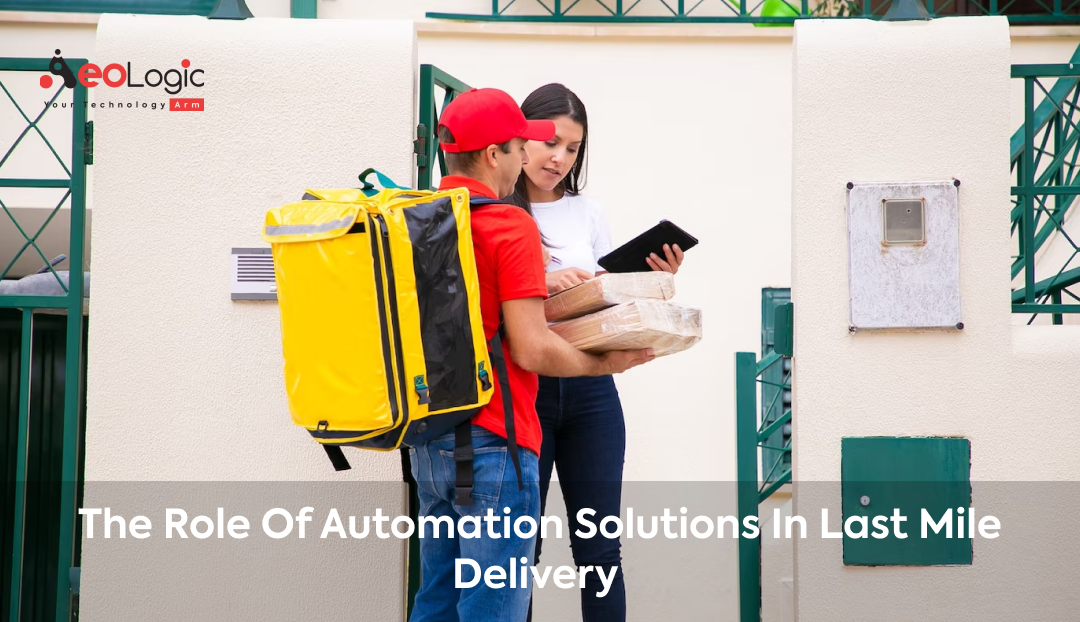Last mile delivery is both the icebreaker and the Achilles Heel of dealing and eCommerce! The process through which a consignment eventually reaches a consignee, makes a significant impact in the retailer consumer relationship. In supply chain operation, the real differentiator between the leader and the challengers is the smoothness with which goods are delivered. So, the role of automation solutions in last mile delivery is considered a pivotal influencer.
Before getting into the subject of last mile automation, let’s measure the interruptions in the path of last mile order fulfilment.
Also read: Automation in Logistics and Supply Chain Management
Problems of Last Mile Delivery
Client experience is always a high concern in ecommerce. With offline and online mode of retailing getting a single identity, the fine line that formerly was between the two has faded. Consumers now have an honor to order from anywhere and get package at their preferred position, it can indeed be globally.
And to stay ahead in this competition, retailers are happy to oblige them without any inhibitions. Since, retailers are in a race to meet prospects to make a strong relationship with their consumers, it’s from here the problems induce. Consumers want their deliveries to be quick and free, and last mile consumes time and is a costly stage in the supply chain operation.
Rather with every wrong move in the execution of last mile delivery, an extra cost is added making it more and more costly. Some of the common challenges in the last mile could be
Increase in Delivery Cost
Imagine, indeed after active planning, the parcel needs to be delivered again as the client isn’t available for taking the order. In that case, the parcel gets returned and another delivery attempt is made after following up with the client, this adds to the delivery cost. There can be several issues of this kind that increase cost.

Delays
Common belief is delays do due to Warehouse Management System, but that isn’t entirely correct. Delays can also do if there’s no methodology for optimization of routes. Last mile is the shortest distance in the order fulfilment but requires a lot of planning and streamlining of information.
Real Time Visibility
When there’s no process to track orders, it’s tough to keep consumers informed about the product position and time it would take to make the final delivery. This increases restlessness in consumers and possibility of order cancellation rises.
Unknown Reasons
Businesses for some reason don’t spend on upgradation of last mile technologies, which can be a catalyst in turning the tables and making a business profitable. From cost to transportation to optimization of routes to reaching the right address to global journey, there can either be one or a combination of reasons for the delay in the delivery of consignment, so last mile software should be suitable to prevision and advise about any unknown extremity.
Reverse Logistics
In the last mile delivery, it’s important to take into account reverse logistics. It means if the good requires to be returned to the manufacturer and also back to the storehouse. It has to be organized in the most cost-effective way. For numerous, it isn’t a part of last mile planning, and get a heavy expenditure especially if a product needs to be replaced.
Need for Automation of Last Mile Delivery
Last mile technologies are a small but a significant part of supply chain operation, which looks into failure in delivery, route optimization, cost involvement in managing complex routes, channeling finances for unknown stops, tracking of product movement, giving notifications via SMS about the status and further more. It provides coherent real time tracking of the consignment till it reaches the final destination and the order is complete.
Benefits of Installing Last Mile Delivery Automation Solutions
- Brings down labor cost significantly. The traditional system of sorting and manually covering the movement of goods isn’t needed. It wasn’t only expensive but was full of errors as nanosecond monitoring wasn’t possible.
- More communication with the logistics and transportation through RFID technology helps in getting a clear graph. It increases scalability with respect to storehouse and dispatch.
- Objective for expansion increases and there’s better return on investment.
- It sets up an inflow for enabling process, which ensures compliance with norms of a company.
- For proof of delivery, it can take signature capturing, checks ID or photograph as an evidence for delivery.
How to Automate Last Mile Delivery?
Last mile delivery technology enhances client experience, it ensures a client is regularly streamlined on the status of their order. This is especially a veritably effective tool in global retailing and has readdressed the objective and possibility of eCommerce. Areas via which automation of last mile delivery has been made possible are
Route Optimization Software
With the installation of this software in supply chain operation, it has come easy to chart out ways to reach the client in the last leg. Every complicated by lanes are tracked and several different possibilities can be measured to optimize logistics.
Warehouse Management System
To reduce cost, make delivery free and fast, it’s relatively helpful. The nearest storehouse can be tracked with minimum labor involvement for faster and free of cost delivery.
Easy Scheduling of Delivery
Automated system gives options for delivery time. However, delays or returns of package can be avoided, if delivery is listed as per the convenience of a client. Agents can deliver package when the client is available at the delivery address.
Also read: The Role of Automation in Supply Chain Resilience
Final Notes
With the capability to track delivery agent position, live ETA can be streamlined. This keeps the client informed through SMS or emails notifications. There’s satisfaction and helps in structuring trust which in turn spreads goodwill and helps businesses soar.
Get in touch with us to know more about implementation of automation solutions for your business!






